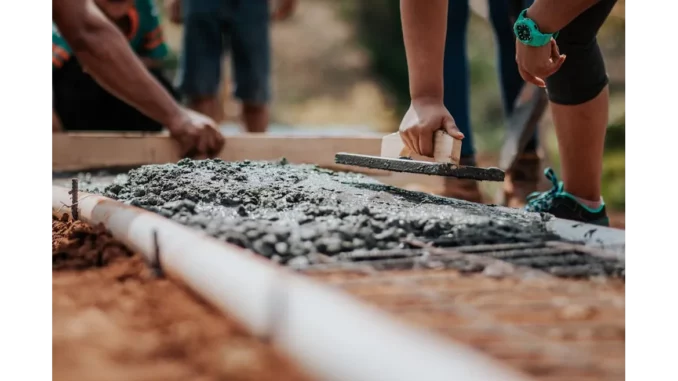
In the bustling world of construction, where towering cranes and buzzing drills create a symphony of progress, safety is paramount. The importance of a well-conducted risk assessment cannot be overstated. Recently, I had the opportunity to sit down with Matthew Hughes, a seasoned site manager with over two decades of experience in the construction industry, to delve into the intricacies of construction risk assessments and, more pointedly, the pivotal role of method statements in these processes.
Focus360 Energy: property compliance services – pre-planning to post-construction. Learn more.
Matthew greeted me warmly in his office, a modest space cluttered with blueprints and safety gear, a testament to his hands-on approach. As we settled into our conversation, he emphasised the critical nature of method statements in ensuring not just compliance, but the safety of everyone on site.
“Method statements are the backbone of any good construction project,” Matthew began, his voice carrying the weight of experience. “They lay out the roadmap for how tasks should be executed, and in doing so, they highlight potential hazards and the necessary control measures.”
A method statement, as Matthew explained, is a detailed document that outlines exactly how a project will be carried out. It is an essential component, particularly in high-risk projects, such as those involving work at significant heights or the handling of hazardous substances. These documents not only delineate the sequence of operations but also integrate findings from risk assessments, ensuring that all identified risks are addressed with appropriate safety measures.
“Think of a method statement as a playbook,” he suggested. “It draws together all the information from risk assessments and presents a clear, concise plan for managing those risks. This makes sure everyone involved knows what they’re doing and how to do it safely.”
Matthew illustrated this with a recent example from his own experience, involving a complex demolition project. “We had a situation where the building we were working on was close to a public footpath. Our risk assessment identified the hazard of falling debris, and the method statement detailed the use of protective scaffolding and netting to mitigate this risk.”
He paused, reflecting on the outcome, “Because we had that method statement, everyone knew their role and the precautions to take, which ultimately kept the site and the public safe.”
But method statements serve another vital purpose beyond outlining safety measures—they are also instrumental in legal compliance. By documenting the safe system of work, they provide a written record that can be crucial in demonstrating compliance with health and safety regulations.
“Method statements are not just about ticking boxes,” Matthew continued. “They are about creating a culture of safety. When everyone understands the risks and the steps in place to manage them, it fosters an environment where safety is everyone’s responsibility.”
The construction industry is fraught with a myriad of potential hazards, from slips and trips to more severe risks like electrocution and exposure to hazardous substances. As Matthew pointed out, a well-prepared method statement is an invaluable tool in mitigating these risks.
“It’s about being proactive,” he explained. “By identifying risks early and detailing how to manage them, we reduce the likelihood of accidents. This not only protects our workers but also enhances productivity and contributes to the overall success of the project.”
In addition to enhancing safety and compliance, method statements also facilitate communication across the workforce. They ensure that everyone, from the site manager to the newest apprentice, has a clear understanding of the tasks at hand and the safety procedures to follow.
Matthew shared a story about a young worker who joined his team. “At first, he was overwhelmed by the complexity of the site. But once he had a method statement in his hands, he quickly grasped the workflow and the safety measures. It was a game-changer for his confidence and performance.”
As our conversation drew to a close, Matthew left me with a powerful insight: “Safety is not just a priority; it’s a value. And method statements are a critical part of upholding that value. They are not just documents; they are the foundation of a safe and successful construction project.”
In the end, my discussion with Matthew Hughes reinforced the importance of method statements in the broader context of construction risk assessments. They are more than mere paperwork—they are vital instruments that ensure safety, compliance, and effective communication on construction sites, ultimately safeguarding lives and facilitating the smooth execution of projects.
By sharing his experiences, Matthew painted a compelling picture of how method statements, when used effectively, can transform the landscape of construction safety. For anyone involved in the industry, understanding and implementing these documents is not just advisable—it’s essential.
Lewis Davis


Be the first to comment